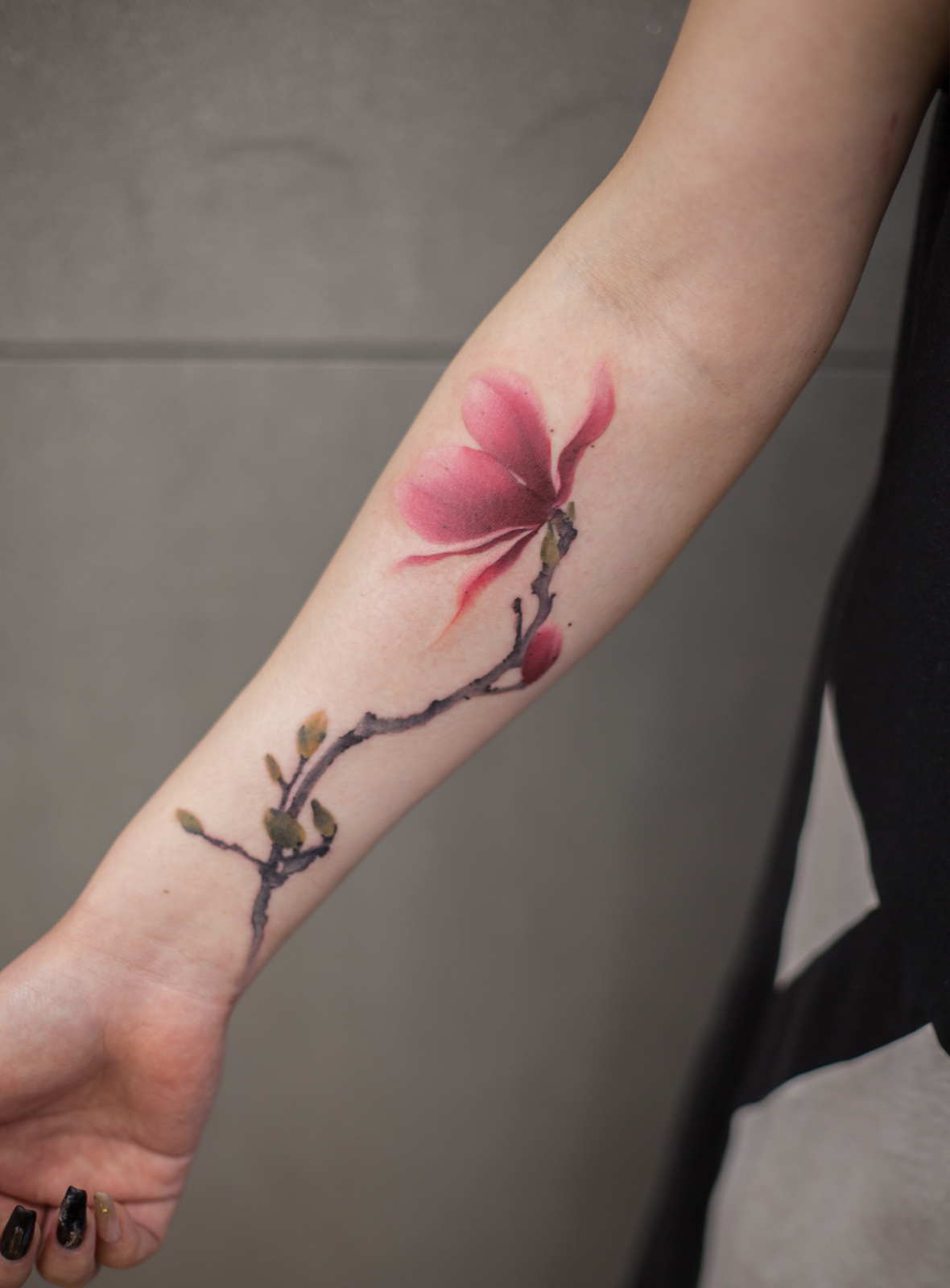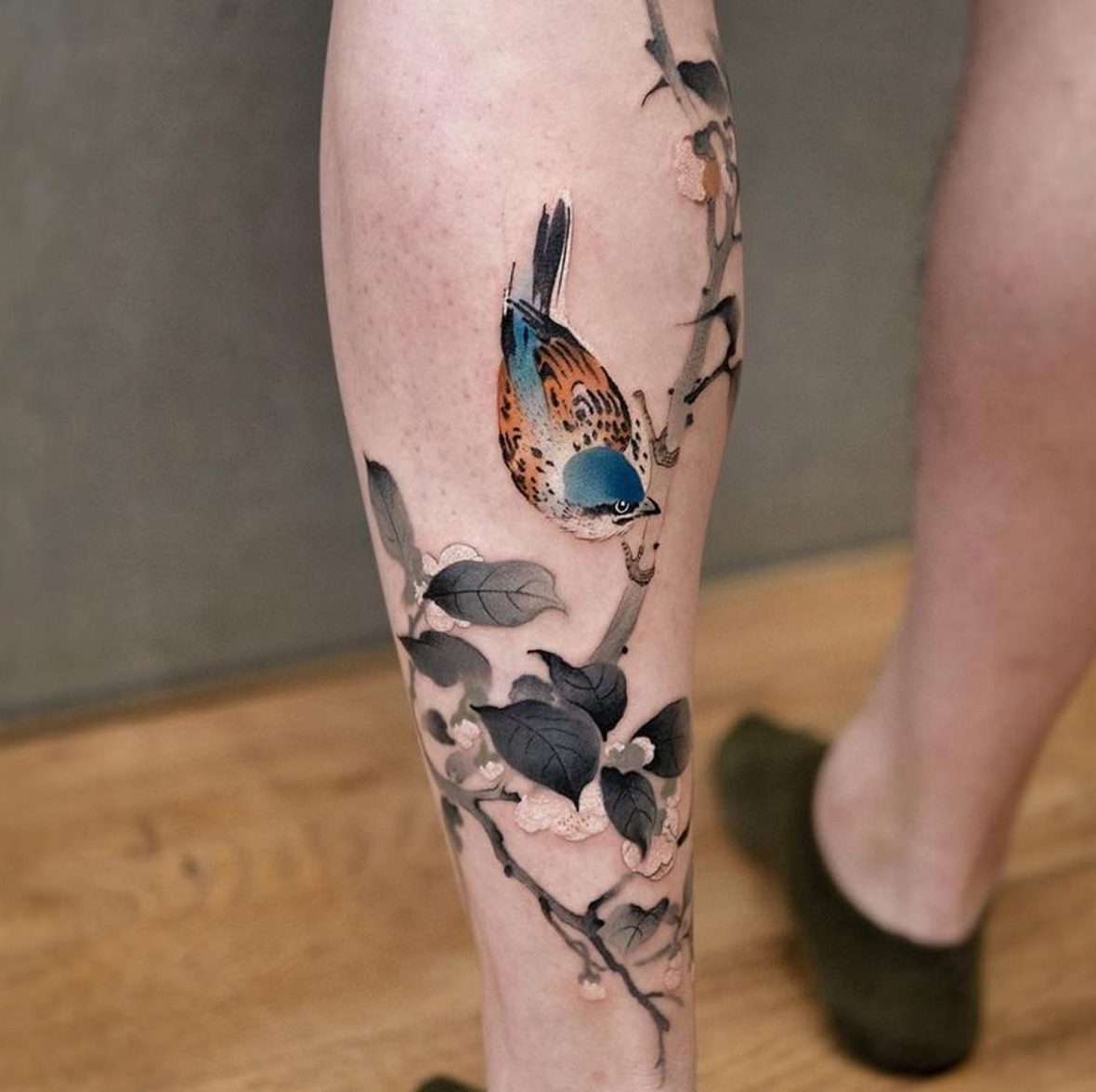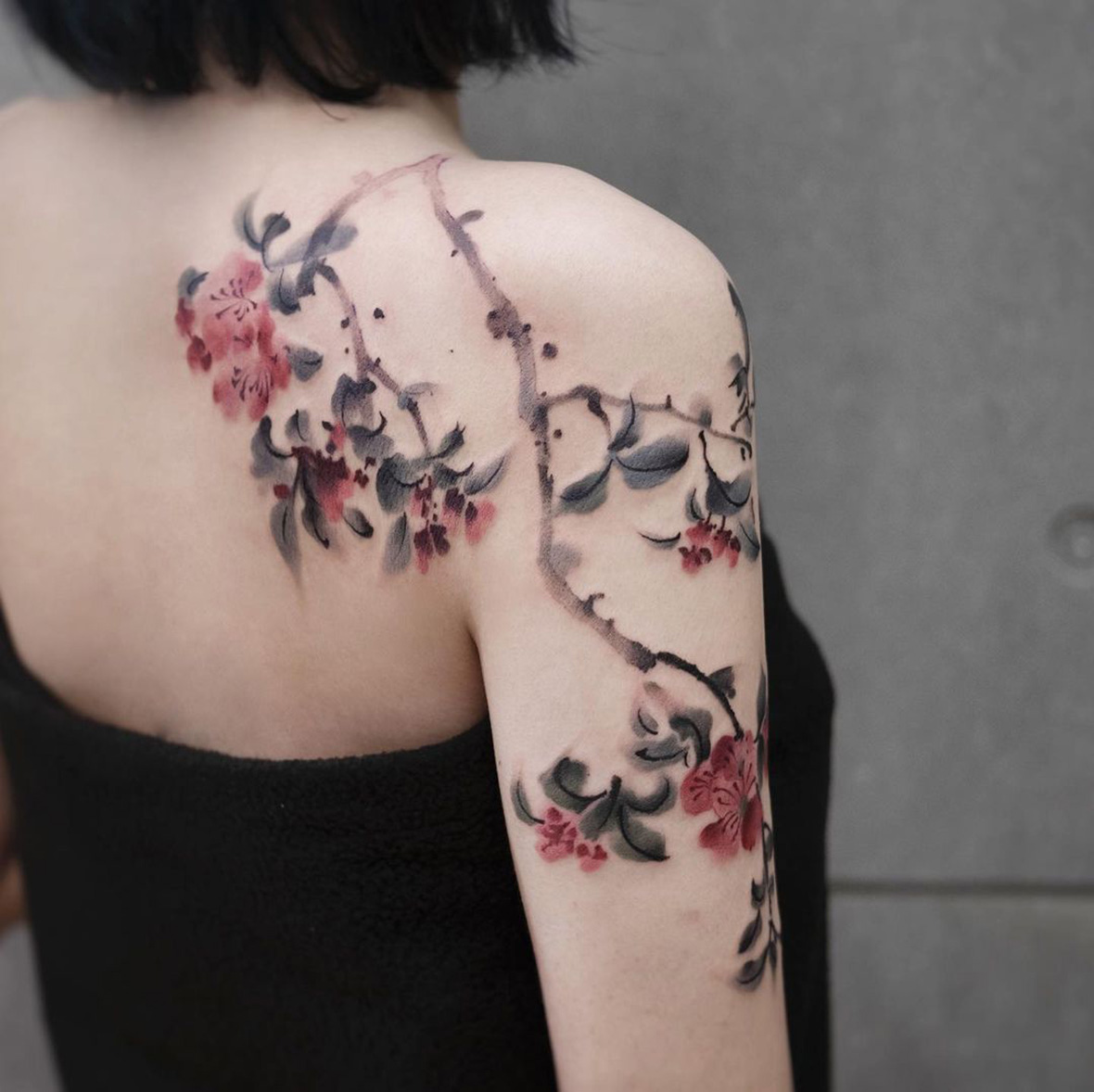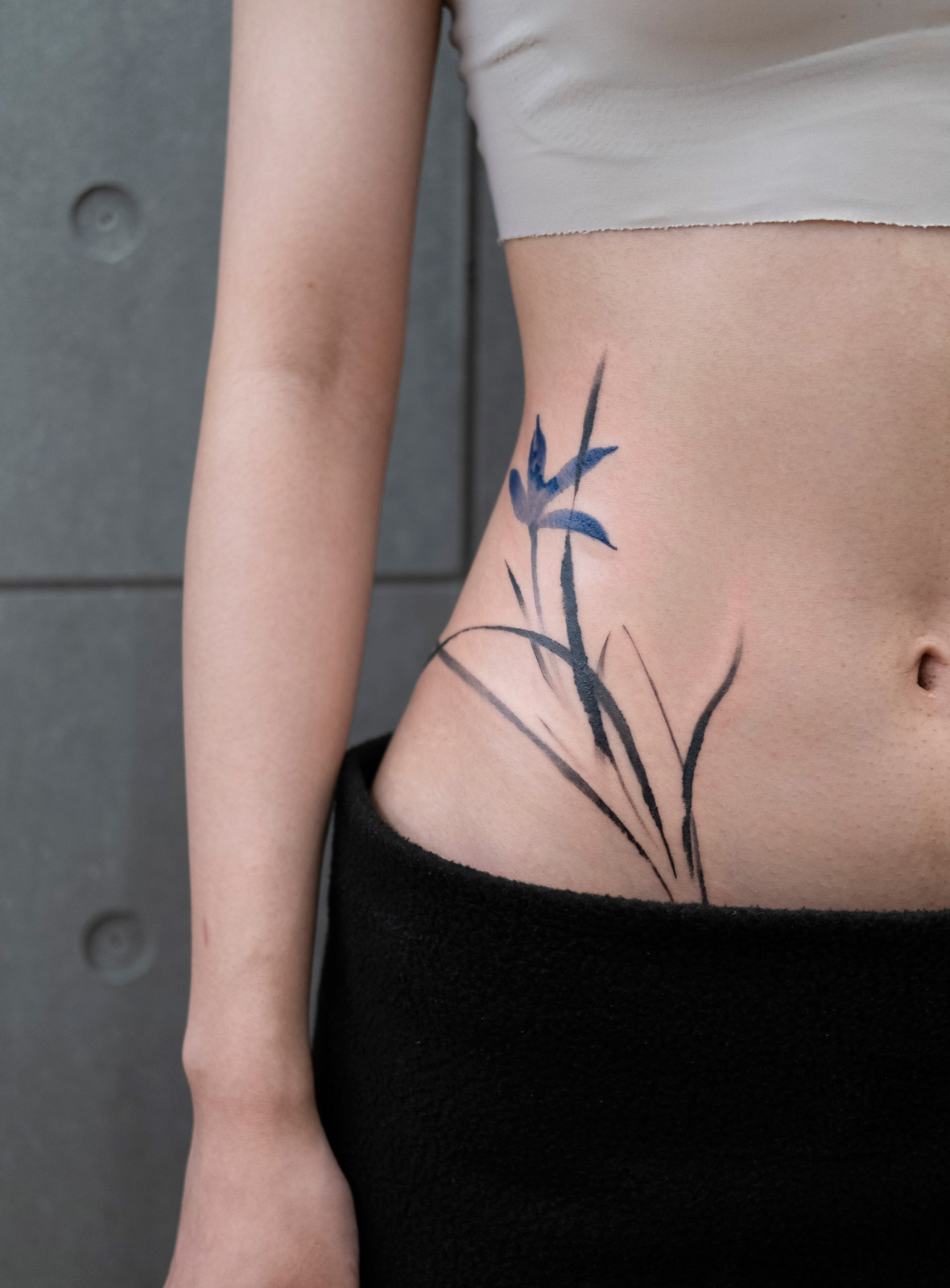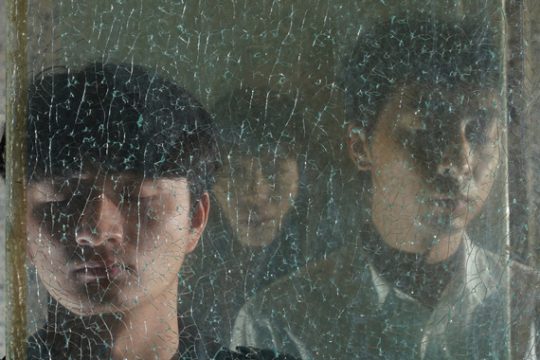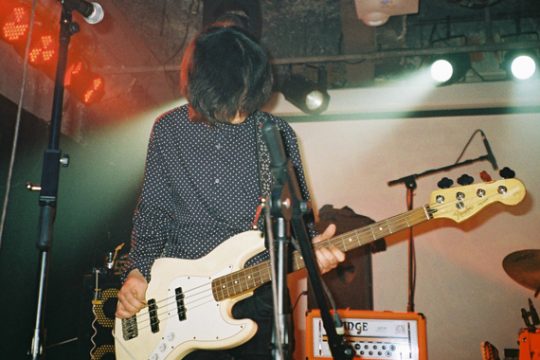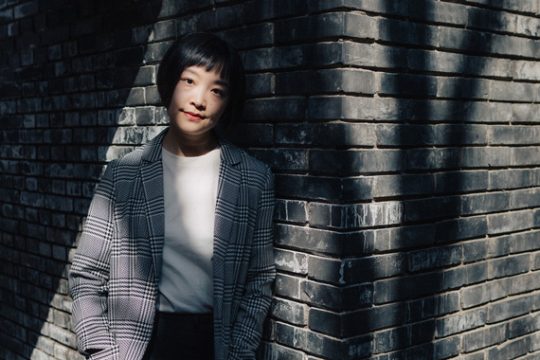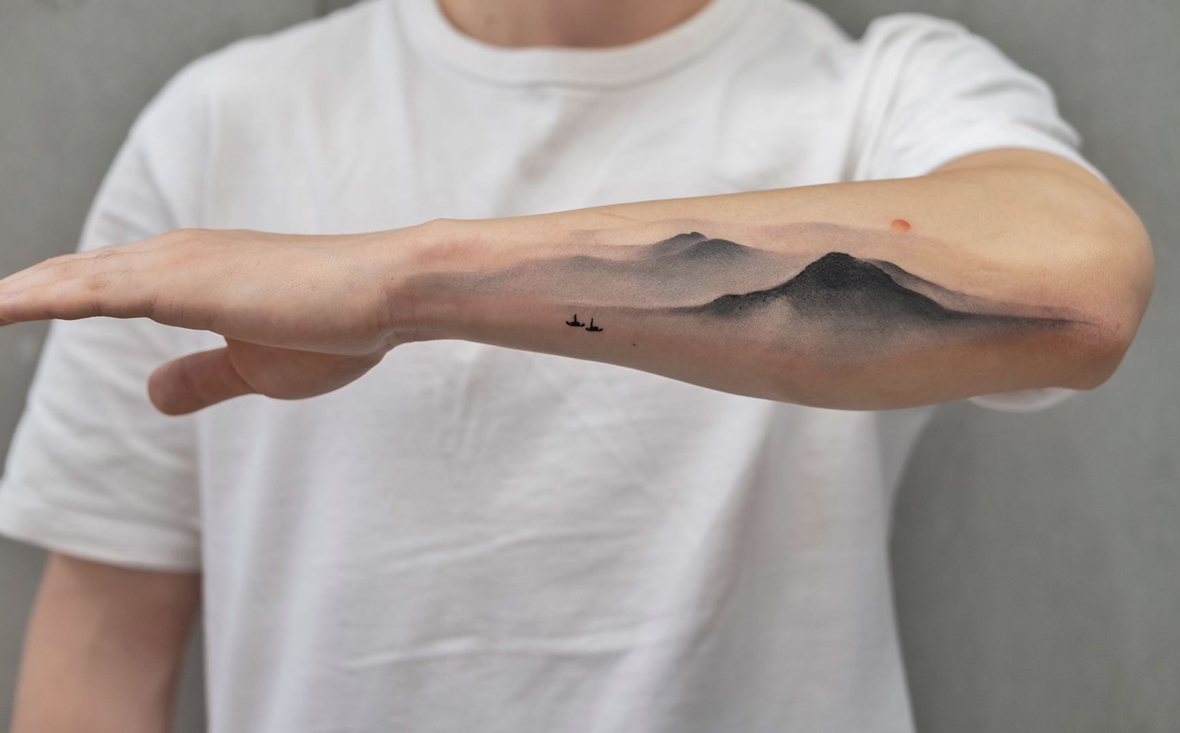
In China, tattoos have faced stigmatization for many years, often being associated with thugs and gangsters. It’s a stigma that can perhaps be traced to the Cantonese box-office hits of the 1990s, such as Young and Dangerous and A True Mob Story, which depicted machete-wielding hooligans with a devil-may-care attitude and inked skin. These preconceptions around tattoo art have led to its poor reputation, especially in white-collar professions. In recent years, the Chinese government has even issued a decree banning tattoos from appearing on television, further cementing body art as a mark of disgrace. Even if international superstars are free to show their inked skin on Chinese broadcasts, local celebrities are held to a different standard.
But in reality, body art has long been a part of Chinese culture, dating tens of centuries back. From being a Song and Yuan dynasty custom to body art references in old literature, tattoos haven’t always held such negative associates. Sure, during certain periods of time, branding criminals with permanent tattoos served as a form of punishment, but for even longer periods, they were seen as symbols of courage and power. For example, in Treatise on Geography from the Book of Han, a passage reads, “A man with short hair and inked skin can repel scaled dragons,” which is linked to the belief that tattoos can infuse an individual with draconic powers and allow them to conquer any hardship. The 14th-century Chinese novel Water Margin, offers yet another example of how tattoo art used to be seen under the public eye—Shi Jin and Yan Qing, the celebrated protagonists of the book, were described as ink-covered vagabonds.
在中国,关于纹身的刻板观念络绎不绝,依然有不少人群将纹身视为黑帮甚至是社会毒瘤的象征,将纹身与 “坏孩子” 等号入座。这类 “有色眼镜” 或许是受到了来自上世纪八九十年代香港黑帮电影的影响,在《古惑仔》,《龙在江湖》等影片中,那些动不动手持砍刀、「左青龙,右白虎」的凶恶造型,使得纹身在印象中成为望而生畏的词语。而在现实社会中,用人单位要求从业者不能拥有纹身、中国广电等政府机构遏令 “纹身不能上电视” 的举措等等,让此类观念更是有过之而无不及。即便电视上国际体育明星龙头虎臂的形象,让不少人放下对纹身的“警惕”,但在偏见与争议还在持续。
其实早在数千年前,不少中国古代典籍中,就曾出现过文身、镂身、扎青、点青、雕青等文字记载。除了先秦等一些朝代里,纹身作为一种刑罚(墨刑)被刺在囚犯的面部之外,纹身则更多象征忠诚、勇气、力量。《汉书·地理志》就曾记载:“文身断发,以避蛟龙”,中国古代东夷人和百越人认为,纹身能让他们获得蛟龙之力,征服大海。而在四大名著《水浒传》中,九纹龙史进和浪子燕青纹身的形象深入人心,他们都是行侠仗义的孤胆英雄。
In modern-day Beijing, tattoo artist Chen Jie creates her art with the pride of Chinese tattoo’s earlier lineage. Her works are a departure from conventional tattoo styles, with an aesthetic that more closely resembles Chinese ink-wash paintings. Under her needle, a menagerie of wildlife flutters to life atop forearms; lush prairies and glistening streams surface from tendon and muscle; while plum orchids, blossoming chrysanthemums, and bamboo groves sprout freely from bare patches of skin. The colors, details, and exacting line work with which Chen approaches each piece demonstrates an impressive mastery of her craft, and her unique style of tattooing carries an appeal that can be appreciated by even those unacquainted with the art form. As such, she’s garnered her much-deserved attention both at home and abroad. “Japan has ukiyo-e style tattoos, Europe and the U.S. have old-school and new-school tattoos,” she says. “What I look to achieve is my own distinctive style, one that stems from my own culture.”
在如今北京的纹身场景中,陈洁算是一位从古代穿越过来的“墨”客。她的作品不像是纹身,更像是由丹青墨水浸染的中国画,能泼墨于山水,寄情于草兽,有梅兰竹菊的雅致,也有景色的山清水秀。精湛的细节、深思熟路的着色无不令人惊叹,铿锵有力的线条不输于任何一种纹身形式,扎刻着对中国传统画风的赞美之情。独树一帜的纹身风格吸引了大量海内外纹身爱好者的眼球,即使你对纹身文化不甚了解,也会被陈洁笔下的“中国风”吸引。她说道:“日本有浮世绘风格纹身、欧美有 Old School 和 New School,我要做的是自己文化属性的纹身。”

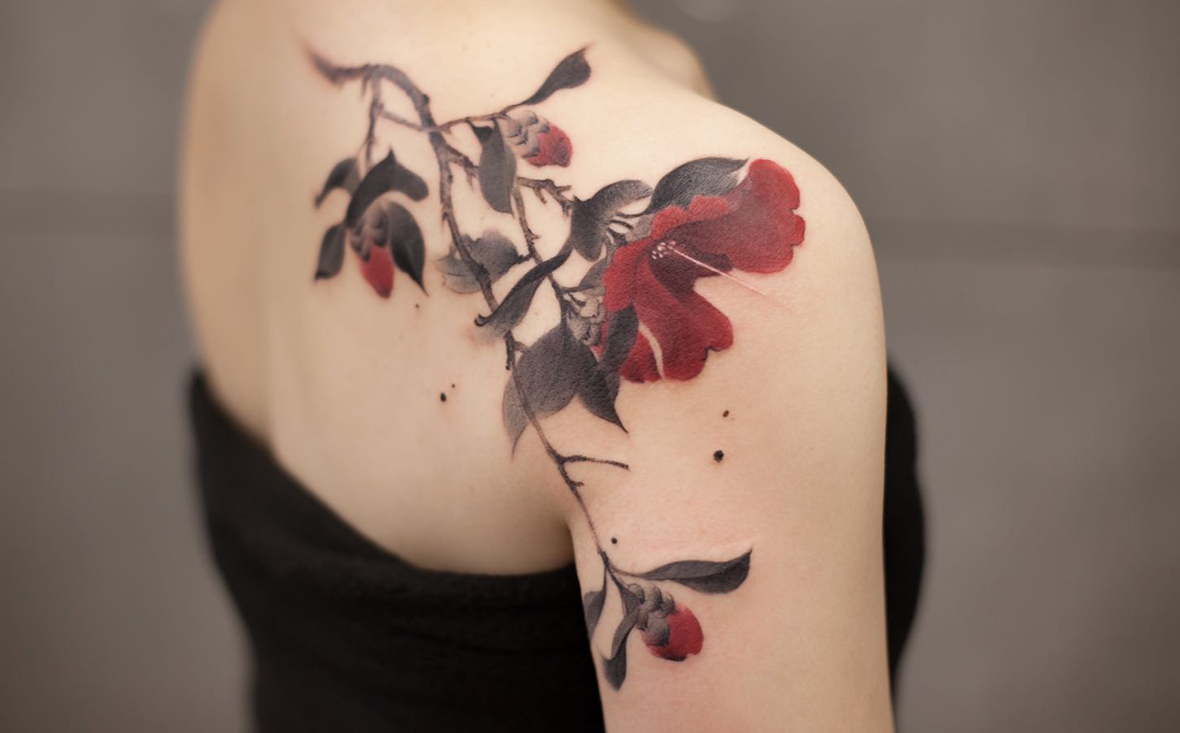
Chen’s tattoo journey began back in 2005. At the time, she was working as a real estate agent in Beijing. Every day, she had to pick up and drop off her father at work at what is now Beijing’s 789 Art Zone, which was then a factory lot. At the time, it was beginning the early stages of its transformation from an industrial zone to an art-and-design hub. Creatives of all stripes were beginning to set up shop there, and one day, a tattoo parlor by the name of Leng Yan Tattoo caught Chen’s attention. She soon began frequenting the small studio as a customer, adding one inked design atop another across her body. “At the time, I only thought tattoos looked good and had a certain attitude to it,” she recalls. “But I’ve loved art from a young age, so I quickly found myself deep down the tattoo rabbit hole.” As her interest in the art form snowballed, she went from client to apprentice and quit her real-estate job to pursue a career in tattooing full-time.
Back in 2005, tattoos were an even more niche form of self-expression in the country. Many believed that only lowlifes would defame their bodies in such a way, but that didn’t stop Chen from pursuing what she loved. “When I decided to pursue a career in tattooing, my family objected,” she says. “They didn’t consider it a serious profession.” But she was tenacious—stubborn even. Now a 15-year veteran in the industry, she’s as optimistic as ever about China outgrowing the stigma around tattoos.
一切要从 2005 年开始说起,陈洁还是售楼处专员,每天上下班去北京 789 工业园区接送父亲。当时他的父亲在工厂里工作,那时候正值 798 由工业转向艺术园区时期,不少艺术从业者纷纷涌入。一家名为 “冷炎刺青” 的纹身店迅速吸引了陈洁的眼球,这家纹身店后来成了她经常光顾的地方。陈洁说:“那时对于纹身的印象仅仅是个性与好看,但因自小喜欢美术,我很快爱上了这门手艺。” 随后,她与“冷炎刺青”从客户转变为师徒的关系,决定放弃售楼的工作,开始走上纹身师的道路。
2005 年,纹身在国内还非常小众的群体,“好孩子不纹身”的观念让绝大多数人对纹身持有偏见。陈洁义无反顾的选择也同样遭受他人的质疑与阻扰,“决定去学习纹身的时候家里人都是非常反对的,觉得这不是什么正经职业。” 但她坚信这种偏见会随着时间的推移而慢慢改变,这一坚持就坚持了十五余年。
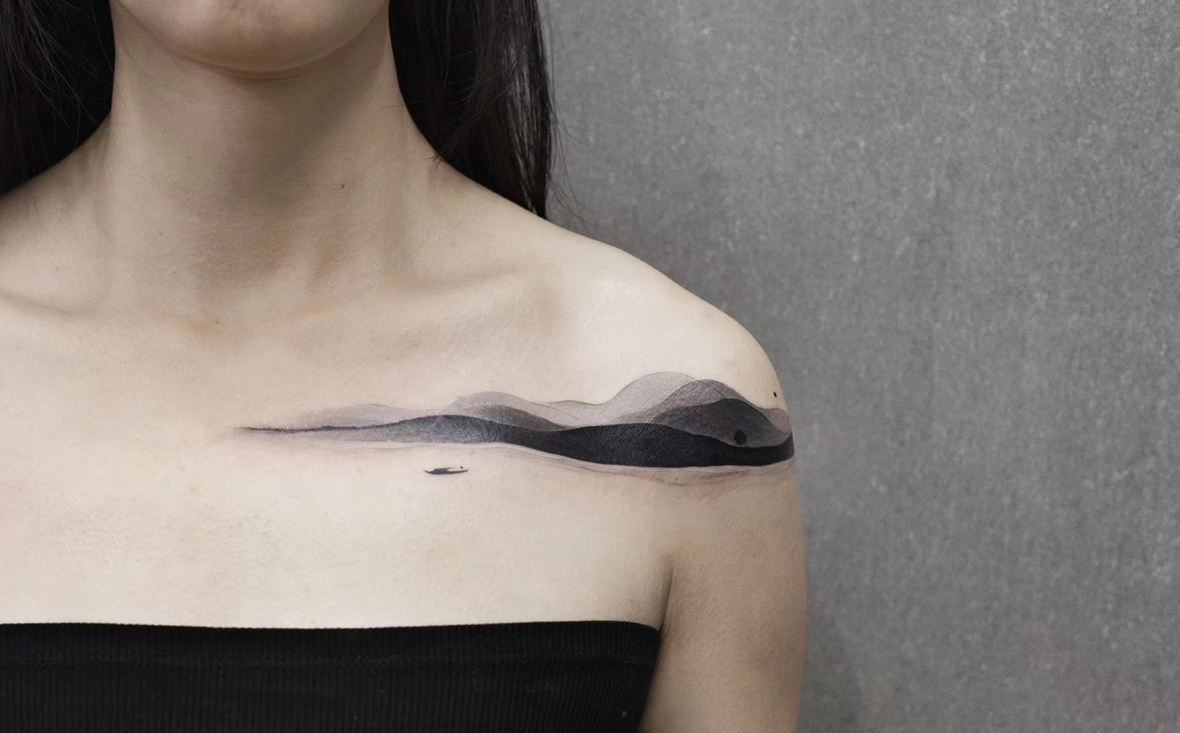
As Chen was exposed to more and more different styles of tattoo art, whether it be tribal, irezumi, or old-school tattoo, her ambitions of developing a style that she could call her own only increased. On a day like any other, when she was daydreaming in her living room, a generic Chinese peony painting that she had hung on the wall caught her attention. These paintings, mass-produced and popularized in China due to their associations with prosperity and peace, unexpectedly opened her creative floodgates. “Chinese culture dates back thousands of years,” she says. “There’s so much to work with, so why not bring the material to life through my tattoos?”
With this eureka moment came a new set of challenges. She was well versed in tattoo art by that point, but traditional Chinese art was a subject far out of her wheelhouse. To learn, she began looking into ink-wash painting, finding inspiration from and emulating the brushstrokes of the country’s most talented painters. The hard work and dedication paid off, as she’s now developed a distinctive style of tattoo art that blends the best of Chinese culture and Chinese art.
在接触了图腾纹身、日式传统、欧美写实等市面上常见的纹身风格之后,陈洁开始渐渐思考并探寻属于自己的风格。她躺在家中的沙发上,对着墙上的《富贵牡丹图》端详许久,这是一副传统的中国画卷,被挂在很多家庭的客厅和卧室中,错落有致的线条搭配温和色调,调和出富贵祥和的美好寓意。突然间,一丝想法涌上心头:“中国自己的传统文化有几千年历史,有这么多好的题材和无数的辉煌为什么不能拿来做纹身呢?”
灵感在瞬间爆发的同时,也面临艰巨的问题。虽然自己是绘画爱好者,但中国传统绘画对当时的她来说太过陌生。陈洁决定尝试自学国画,经常观看并临摹水墨画大师的作品,并从中汲取灵感。在当时,中国风纹身师可以称得上凤毛菱角,甚至可以称得上前无古人后无来者,陈洁全凭自己的经验和领悟慢慢进步。

Due to the drastic differences between her past tattooing style and her tattoo reimagining of Chinese art, there was a steep learning curve to be climbed. It was especially tough to properly capture the weight, pressure, and flow of different brushstrokes, the way that ink distributes on paper, and so on. Electric tattoo machines were out of the question—they were far too clumsy. Chen settled on working by hand with a single needle, replicating the flowing grace of ink-wash paintings poke by poke, a time-consuming process to say the least. She also has to dilute the ink at different stages to ensure that the colors can match the gradience of a brushstroke. Although her tattoos aim to reinterpret Chinese paintings, there’s a degree of power and rhythm to her works that differentiates itself from traditional ink paintings.
因与以往的纹身类型不同,在绘制水墨纹身的时候也具有挑战。要想在纹身中体现水墨画中焦、浓、重、淡、清产生丰富的变化,以及笔头在宣纸上划出的劲道等等,并不是一件容易的事情。同时,陈洁认为渲染效果是水墨纹身的重要一环,这种渲染类似于墨水在宣纸上晕开的效果,需要讲究 “心中有墨而达到心中有渲。”
陈洁摒弃了传统纹身中割线和打雾填色的创作方式,用纹身针慢慢推出水墨画的图案,需要耗费比其他纹身更多的时间来完成。而相同的颜色也需要经过稀释成不同的程度后,再在皮肤上刻出水墨画中渐深或渐浅的变化。虽然是水墨画,但陈洁在纹身中埋入张扬的线条,纹身图案如同风中的劲草,使得韵味与力量的比例平衡。
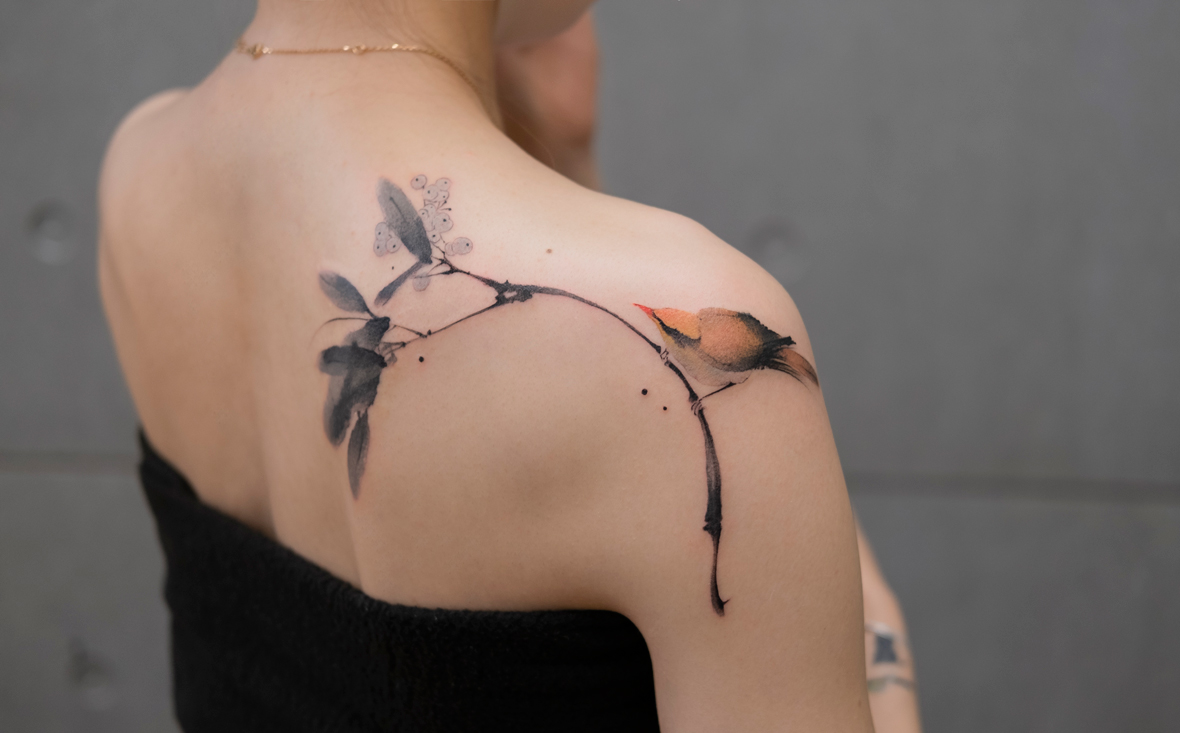

Today, Chen runs her very own tattoo studio in Sanlitun under the name Newtattoo Studio. It’s home to 11 residing tattoo artists, most of whom have all apprenticed under Chen. Droves of customers drop in every week, with a diverse demographic that includes stay-at-home moms, white-collar professionals, and expats with an interest in Chinese art. “I hope my tattoos can be the opening of a window,” Chen says. “The past is the foundation, but I’m building atop of it with my contemporary take. I hope it can help people see just how rich Chinese culture really is.”
如今,陈洁的纹身工作室已从早前北京三里屯“脏街”搬至另一侧二百平米的创意空间内。这家名为“Newtattoo Studio”的纹身店由陈洁一手创立,现在共有十一位纹身师。其中几乎所有人都是陈洁的徒弟,或是慕名而来的纹身师。每周,都有数十名以上的顾客前来纹身,顾客从带孩子的母亲到职场的上班族等等。还有很多喜欢中国文化的中外顾客也前来问询,陈洁说:“我希望用纹身打开了一扇窗,以古典为体,现在为用。让更多国际友人了解中国博大精深的文化。”
注释:北京“脏街”,曾经北京年轻人聚集的酒吧、小吃街,于2017年5月被拆迁
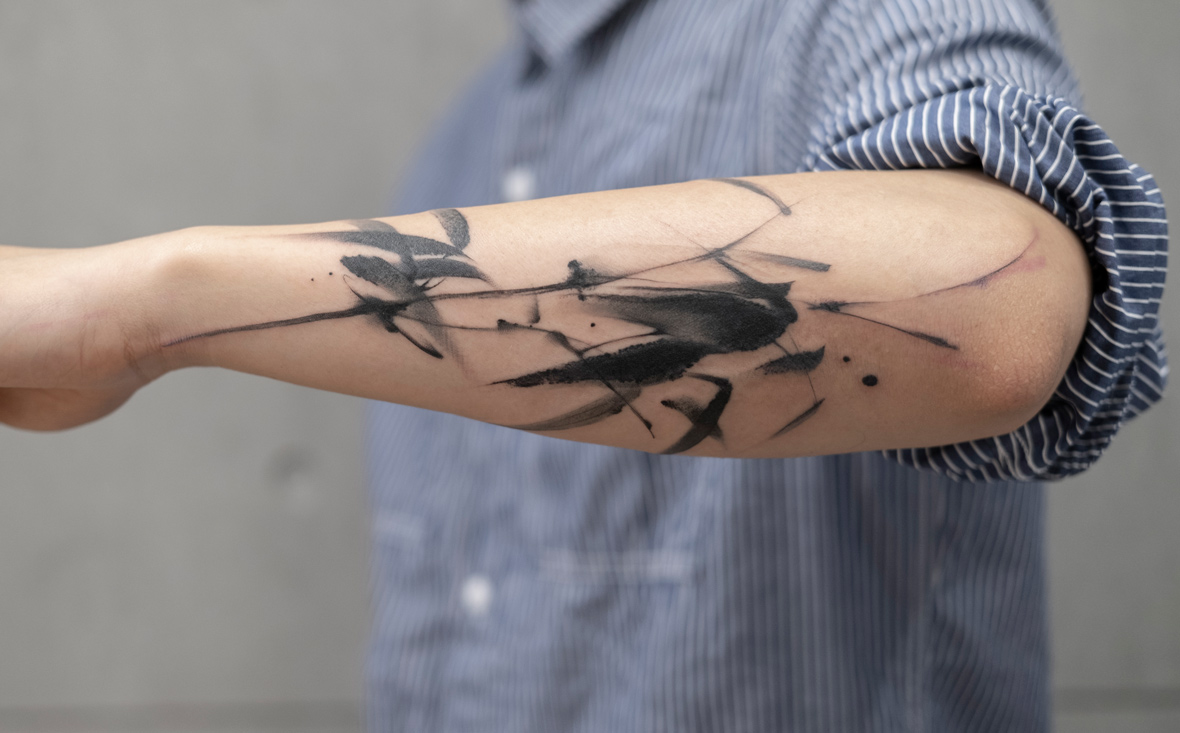
It’s been a long journey from her humble beginnings as a customer at Leng Yan Tattoo to being one China’s most sought-after tattoo artists today. This past decade, she’s bore witness to tattoos gaining an increasing level of acceptance with younger generations. Naysayers still remain of course, as evidenced by the banning of tattoos on broadcast television, but her persistence is unwavering. “Stigmas aren’t always a bad thing,” she shrugs. “They can remind us of what we should or shouldn’t do.”
As for what the future holds for tattoo art in China, Chen only hopes that her work can change people’s minds about the art’s stained reputation. “I want every client to feel respected and show more people, especially ink enthusiasts, that Chinese culture can very much be incorporated into tattoo art,” she says. “A Chinese tattoo renaissance is possible.”
回望当初在“冷炎刺青”第一次接触到纹身时的场景,陈洁早已是中国纹身圈子的资深玩家。而在这十几年中,随着各种地下文化的宣传与普及,纹身在很多年轻人当中渐渐远离了禁忌色地带,陈洁是这十多年的见证人。现在,即便身边还依然会听到少部分人的偏见声音,但她依然会带着她的水墨色和 “Newtattoo Studio” 一直把中国风纹身做下去。她说:“有偏见也不是什么坏事,会时刻提醒我们什么该做什么不该做。” 而对于中国纹身的未来,陈洁只希望自己作为一个推广者继续坚持下去,她说:“要对得起顾客每一寸肌肤,让更多喜欢纹身的人可以选择中国文化为题材,来一场皮肤上的文艺复兴。”
Like our stories? Follow us on Facebook and Instagram.
Instagram: @chenjie.newtattoo
WeChat: newtattoo-studio
Weibo: ~/newtattoo陈洁CEO
Contributor: Pete Zhang
Images courtesy of Newtattoo Studio
Instagram: @chenjie.newtattoo
微信: newtattoo-studio
微博: ~/newtattoo陈洁CEO
供稿人: Pete Zhang
图片由 Newtattoo Studio 提供

